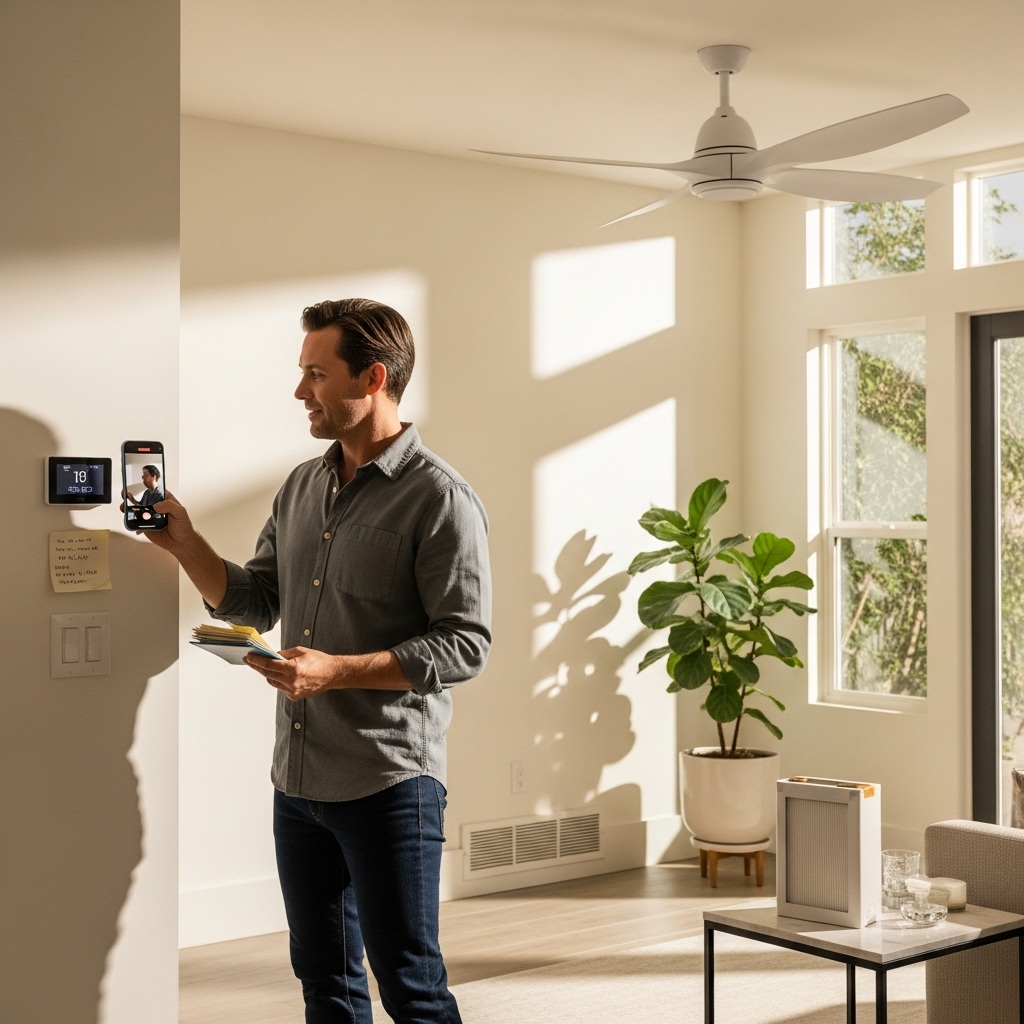When your Malibu home stops cooling, a calm, methodical troubleshooting approach can save time and prevent unnecessary stress. Before a technician arrives, you can safely perform a series of observations and simple checks that often restore performance—or at least narrow down the cause. This guide walks you through a practical, homeowner-friendly sequence adapted to Malibu’s coastal climate. If you need professional support or want to compare next steps with expert air conditioning repair guidance, use the following checklist to document what you find and communicate clearly.
Note: Always prioritize safety. If you smell burning, see sparking, or find water near the air handler, turn the system off and call a professional. Never open sealed electrical panels or handle refrigerant components.
Step 1: Verify Thermostat Settings and Location
Thermostat errors are common and easy to resolve. Confirm the thermostat is set to cool, the temperature is below room temperature, and any schedule holds or vacation modes are off. Replace batteries if your model uses them. In Malibu homes with bright sunlight, make sure direct sun isn’t hitting the thermostat, which can cause false readings and short cycling.
- Set mode to Cool and fan to Auto for a proper test
- Disable schedule holds and temporary overrides
- Move heat-producing lamps away from the thermostat
Step 2: Check Airflow Basics
Restricted airflow undermines cooling performance. Coastal dust, pet hair, and salt-laden particulates can load filters and coils faster than expected.
- Inspect and replace the air filter if dirty or damp
- Open all supply registers and ensure returns are unobstructed
- Look for collapsed or disconnected duct sections in accessible areas
- Confirm interior doors aren’t creating pressure imbalances
Step 3: Outdoor Unit Inspection
Turn the system off at the thermostat for safety, then observe the outdoor unit. Clear leaves, beach debris, and overgrown shrubs. Look for ice buildup on refrigerant lines and listen for unusual noises once you restart the system. Do not remove panels or contact internal wiring.
- Maintain at least two to three feet of clearance around the condenser
- Gently rinse coil fins from the outside-in to remove surface grime
- Check that the outdoor fan spins and that warm air exhausts upward
Step 4: Condensate Drain and Moisture Control
Malibu’s marine layer and fog can lead to extra condensation. If your system has a visible drain line, look for clogs or slow flow. Some systems include a float switch that shuts down cooling if the drain backs up. If you see water around the indoor unit, turn the system off and place towels to protect nearby areas.
- Locate the drain line and check for steady flow when cooling runs
- If you have a cleanout, ensure it’s capped and accessible
- Do not pour chemicals; consult a pro for safe cleaning methods
Step 5: Electrical Basics You Can Check
With the thermostat off, inspect your home’s breaker panel for any tripped breakers related to cooling equipment. Reset once only if safe. If the breaker trips again, keep the system off and call a professional.
- Label breakers for future clarity if they’re not already marked
- Note any buzzing or heat around the panel and report it to your technician
Step 6: Evaluate Temperature Split
A quick temperature split test can provide useful data for your technician. After the system runs for at least 10–15 minutes, measure the temperature at a return grille and at the nearest supply register. A small differential may indicate airflow or refrigerant issues. Share your readings and the time taken after startup.
Step 7: Document Noises, Smells, and Patterns
Unusual sounds, persistent odors, or recurring patterns—like late afternoon warm-ups—offer diagnostic clues. Record short videos with your phone, especially if symptoms are intermittent. Coastal homes sometimes experience issues after long, foggy nights or during hot, windy afternoons; note environmental conditions when the problem occurs.
When to Stop and Call a Professional
If you have repeated breaker trips, visible icing, burning odors, or persistent water around the air handler, stop troubleshooting and contact a qualified technician. Continuing to run the system can cause avoidable damage. Share your observations—they shorten diagnostic time and often lead to faster solutions.
Malibu-Specific Troubleshooting Tips
The coastal environment introduces patterns worth watching. Salt and fine particulates can create a thin film on outdoor coils that hinders heat exchange. Canyons amplify dust during dry periods, filling filters quickly. Foggy mornings can increase condensate production, challenging a marginal drain line.
- Inspect filters more frequently during beach season and windy periods
- Keep landscaping trimmed well away from the condenser’s airflow path
- Ask about protective coatings and periodic coil cleaning
- Consider a drain line cleanout and float switch where appropriate
Improve Comfort While Waiting for Service
Even without active cooling, you can keep temperatures manageable. Close shades, run ceiling fans clockwise for downward airflow, and concentrate activity in cooler rooms. Avoid using ovens or clothes dryers during peak heat, and hydrate frequently.
Working Effectively With Your Technician
Arrive at your appointment with notes, videos, and any service history. Point out rooms that run warm and share your temperature split. Ask for a clear diagnostic plan and for preventive recommendations after the repair. If you need options or want to compare approaches, consider reviewing professional AC repair resources so you can make the most informed choice.
Frequently Asked Questions
Q: Why does my AC struggle on foggy mornings and hot afternoons?
A: Fog increases condensate and can expose drainage weaknesses; hot, windy afternoons raise heat load and stress marginal components. Coastal conditions reveal issues that may not appear in mild weather.
Q: My outdoor unit is running but the air isn’t cool. What should I check?
A: Verify thermostat settings, filter condition, and outdoor coil cleanliness. If airflow seems fine, a professional should evaluate refrigerant and electrical components.
Q: What does icing on the refrigerant line indicate?
A: It often points to airflow restrictions or refrigerant problems. Turn the system off and call a technician to avoid further damage.
Q: Can landscaping cause AC problems?
A: Yes. Overgrowth restricts airflow and introduces debris into the unit. Maintain clear space around the condenser.
Q: How often should Malibu homeowners change filters?
A: Inspect monthly and establish a cadence that matches your environment. Beach activity, pets, and canyon dust usually call for more frequent changes.
Q: Is it safe to rinse the outdoor coil myself?
A: A gentle rinse can remove surface debris, but avoid high pressure and do not bend fins. For deeper cleaning, consult a professional.
Q: Why does my system short cycle?
A: Thermostat placement, dirty coils, electrical issues, or incorrect system sizing may cause frequent cycling. A technician can test and confirm the root cause.
Q: What information helps the technician the most?
A: Clear symptom timelines, temperature split readings, filter change history, and videos of noises or leaks are invaluable.
From Troubleshooting to Lasting Fixes
With a structured approach, you can safely rule out common issues and give your technician a head start. Malibu’s climate rewards proactive maintenance: clean filters, clear condensate lines, and clean outdoor coils reduce strain and extend equipment life. When the time comes for expert help, you’ll be ready with observations that shorten downtime and lead to more durable repairs.
Restore Reliable Cooling in Malibu
If your system still struggles after these checks, schedule a visit with a trusted local professional who understands coastal conditions and communicates clearly. For deeper insights, comparisons, and next steps, explore credible air conditioner repair resources and get your home back to comfortable.

